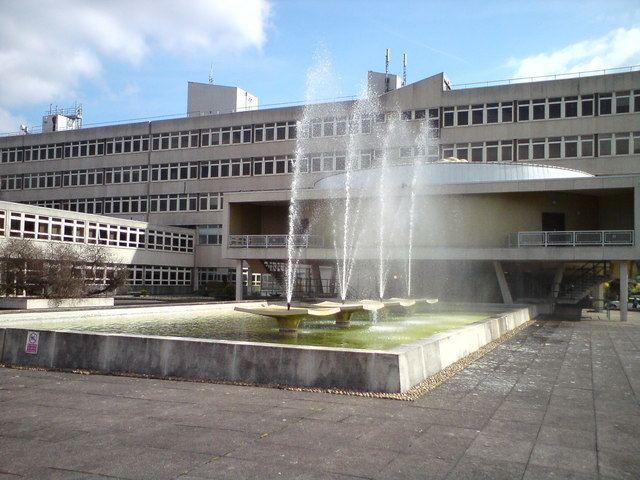Liberal Democrats 13 / 55 | Conservatives 30 / 55 Labour 9 / 55 | |
 | ||
Leader Nick Rushton, Conservative | ||
Leicestershire County Council is the county council for the English non-metropolitan county of Leicestershire. It was originally formed in 1889 by the Local Government Act 1888. The county is divided into 52 electoral divisions, which return a total of 55 councillors. The council is controlled by the Conservative Party. The leader of the county council is currently Nick Rushton, who was elected to the post in September 2012. The headquarters of the council is County Hall beside the A50 at Glenfield, just outside the city of Leicester in Blaby district.
Contents
History
From its establishment in 1889 to 1974 the county council covered the administrative county of Leicestershire, excluding Leicester. In 1974 the Local Government Act reconstituted Leicestershire County Council, adding the former county borough of Leicester, and the small county of Rutland to the area. On 1 April 1997 these were removed from the County Council area again, to become unitary authorities.
Districts and Boroughs
Leicestershire has three tiers of local government. These tiers are the county council, seven district or borough councils and parish councils all of which charge a mandatory tax in return for a service. In urban areas the work of the parish council is likely to be undertaken by the county or district council. The seven district councils in Leicestershire are:
These district councils are responsible for local planning and building control, local roads, council housing, environmental health, markets and fairs, refuse collection and recycling, cemeteries and crematoria, leisure services, parks, and tourism
Political control
Leicestershire County Council consists of 55 elected members, from 52 wards. The most recent election was the May 2013 elections, where all seats were up for re-election. Following these elections, and with subsequent defections and by-elections, the current political composition of the council is as follows.
Elections were held for the reconstituted county council (including Leicester and Rutland) in 1973, leading to no overall control. 1977 saw the Conservative Party take control, but they lost it again in 1981. Elections in 1985, 1989, 1993 and 1997 continued No Overall Control. The Conservatives took control in 2001, helped in part by the removal of the strongly Labour-voting Leicester from the county.
The council's cabinet has, as of December 2015, the following members, with the following portfolios:
Departments
There are six departments:
Key responsibilities
In the five years to 2015, the council's roles and responsibilities changed significantly, due to austerity savings, the transfer of public health from the NHS to the council and many schools becoming academies, independent of the council.
However, that still left a number of key responsibilities. As of December 2015, these are: social care for adults and children; support for schools; highways and transport; public health; waste disposal; economic development; libraries and museums; strategic planning; trading standards; country parks; registration of births, marriages and deaths; and community leadership.
Financial situation
The council claims to be the lowest-funded county council, yet one of the top three best performers, across a wide range of indicators.
From 2010-2015, the council has had to save £100 million - two thirds as efficiency savings and the remainder from services. The council has predicted it will have to save more from services as austerity continues, with a further £100 million-plus of savings required over the next four years.
As of 2015/16, the council's annual budget was £348 million and it had just over 5,000 full-time equivalent staff.
